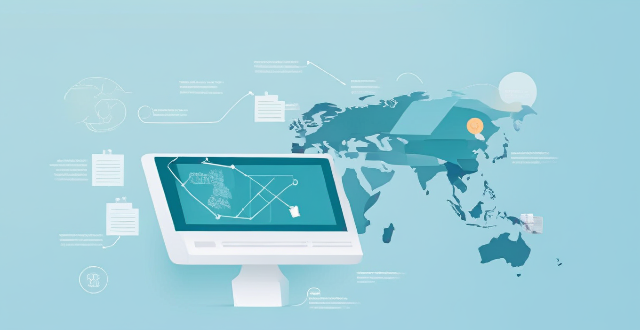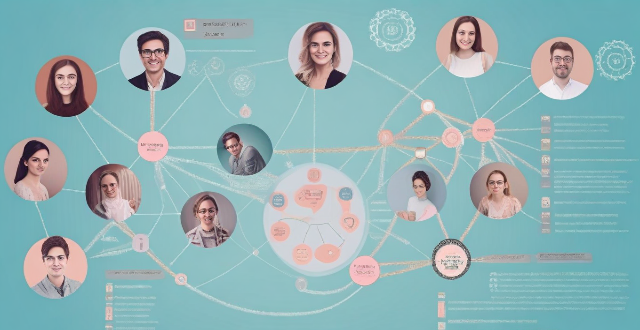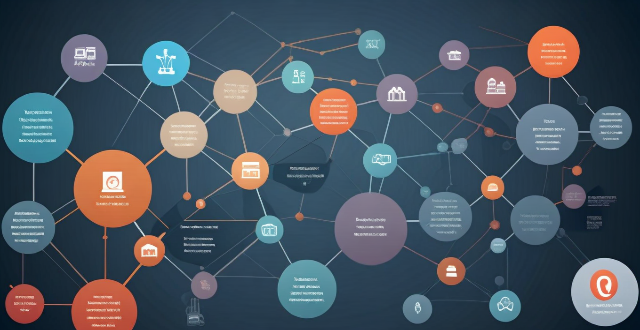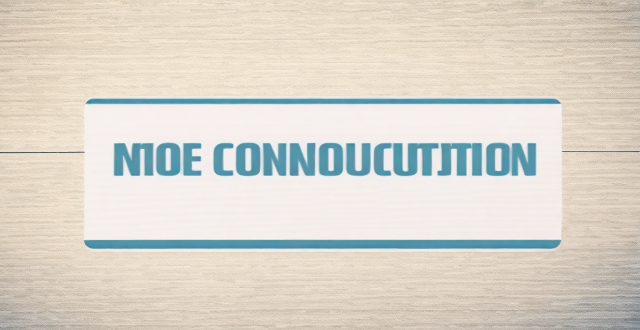Communication Professional

What are the common causes of communication interference ?
Communication interference can occur due to physical barriers like noise and technology issues, language differences, cultural norms, emotional factors, personal biases, misunderstandings, lack of active listening, and poor message construction. Being aware of these causes can help individuals improve their communication skills and minimize disruptions in various contexts.

How do women handle conflicts in personal and professional relationships ?
Handling conflicts is an integral part of both personal and professional relationships. Women, being inherently empathetic and nurturing, often approach conflict resolution differently than men. Here's a detailed insight into how women handle conflicts in personal and professional relationships: In Personal Relationships: Women tend to be active listeners, paying close attention to the other person's viewpoint before responding. They make an effort to understand the emotions behind the words. By putting themselves in the other person's shoes, women can better comprehend their feelings and concerns, leading to more effective communication. Using "I" statements rather than "You" accusations helps reduce defensiveness and promotes a constructive dialogue. Women often look for solutions that satisfy both parties, aiming for mutual satisfaction rather than victory. Recognizing and managing emotions during conflicts allows women to navigate disagreements with less tension. Preserving the relationship often takes precedence over being right, leading to a willingness to let go of minor issues. Sometimes, involving a neutral third party can help mediate disputes and find equitable solutions. Women may use their negotiation skills to find common ground and resolve conflicts amicably. In the workplace, women might express disagreements diplomatically to maintain collegiality and avoid damaging work relationships. Addressing conflicts privately can prevent public embarrassment and allow for a more honest exchange. Women often emphasize team harmony and collaboration, working towards a shared goal despite personal differences. Offering constructive criticism can help improve performance without demoralizing colleagues. Encouraging all voices to be heard can reduce the likelihood of conflicts stemming from feelings of exclusion. Promoting understanding among diverse groups can lead to fewer misunderstandings and conflicts. Many women adopt a transformational leadership style, inspiring and motivating others towards a common vision. Implementing clear strategies for resolving conflicts can create a more positive work environment. Recognizing their own emotions allows women to manage them effectively during professional conflicts. Being attuned to colleagues' emotions can facilitate better interactions and reduce misunderstandings. Women handle conflicts in personal and professional relationships with a blend of empathy, communication skills, emotional intelligence, and a focus on relationships. While each woman's approach may vary based on her personality and circumstances, these traits generally guide their conflict resolution strategies.

What steps can women take to build a strong professional network ?
Building a strong professional network is crucial for career growth and advancement. For women, it can be especially important as they often face unique challenges in the workplace. Here are some steps that women can take to build a robust professional network: 1. Attend industry events and conferences. 2. Join professional organizations and associations. 3. Utilize social media and online platforms. 4. Find a mentor or sponsor. 5. Participate in training programs and workshops. 6. Volunteer for committees or boards. 7. Stay in touch with colleagues and alumni.

What role does clothing play in developing a professional image ?
Clothing plays a crucial role in developing a professional image by impacting first impressions, communicating professionalism, and influencing perception. It can also promote diversity and inclusion in the workplace. By dressing appropriately for the job or industry, you set a positive tone for your professional interactions, boost confidence, enhance credibility, and represent your personal brand or company. Adhering to dress codes demonstrates an understanding and respect for the culture of your field, while neat and well-organized attire shows attention to detail. Studies suggest that dressing more formally can make you appear more competent and knowledgeable, while appropriate clothing can also make you seem more approachable and adaptable. Allowing some degree of personal expression through clothing can promote diversity and individuality within the workplace, while respectful dressing can acknowledge diverse cultural backgrounds in a multicultural work environment. Overall, clothing is a tool for communicating your professional identity, and finding the right balance between professionalism and personal style is key to enhancing your professional image and effectiveness.

How does cultural diversity affect communication within a workplace ?
Cultural diversity has a profound impact on workplace communication, presenting both challenges and benefits. Challenges include misunderstandings due to language barriers and differences in non-verbal cues, variations in communication styles, and differing norms and expectations. Benefits encompass enhanced creativity, improved problem-solving, and greater empathy. Strategies for promoting effective communication involve education and training, clear messaging, open dialogue, and celebrating diversity. By addressing challenges and leveraging benefits, organizations can build cohesive teams that thrive on their collective differences.

How can technology and social media be leveraged to enhance student leadership experiences ?
Technology and social media can enhance student leadership experiences by providing platforms for communication, collaboration, innovation, and professional networking. Students can use instant messaging tools to improve communication skills, project management tools for better collaboration, online learning platforms for fostering innovation, and LinkedIn for building professional networks. Educators should guide students in using these tools effectively and responsibly.

How can women balance their personal and professional relationships effectively ?
Balancing personal and professional relationships is a challenge that many women face in their lives. It requires careful planning, effective communication, and a strong support system. Here are some tips on how women can balance their personal and professional relationships effectively: 1\. Prioritize Your Time: Plan your day in advance, allocating time for work, family, friends, and self-care activities. This will help you stay organized and focused throughout the day. Learn to say "no" to unnecessary commitments and distractions that may interfere with your personal and professional life. 2\. Communicate Effectively: Discuss your needs and expectations with your partner, family members, and colleagues. This will help them understand your priorities and support you in achieving a healthy work-life balance. Don't hesitate to ask for help when needed. Whether it's delegating tasks at work or asking a friend to watch your child, having a support system in place can make all the difference. 3\. Practice Self-Care: Make time for activities that help you relax and recharge, such as exercise, meditation, or hobbies. Taking care of yourself will not only improve your physical and mental health but also enhance your relationships with others. Maintain healthy habits by eating well, getting enough sleep, and staying active to maintain your energy levels and overall well-being. 4\. Build Strong Professional Relationships: Attend industry events and conferences to expand your professional network and build relationships with colleagues and mentors who can offer guidance and support. Seek out mentors who can provide valuable insights into balancing personal and professional relationships, as well as offer guidance on career development. 5\. Embrace Technology: Take advantage of technology tools like calendar apps, task managers, and video conferencing software to streamline your workflow and stay connected with loved ones even when you're away from home. While technology can be helpful, it's important to set boundaries and avoid letting it consume too much of your time and attention. 6\. Remember Your Goals and Values: Always remember your goals and values when making decisions about how to spend your time and energy. This will help you stay focused on what truly matters most to you.

How can mobile communication technology be used to enhance education ?
Mobile communication technology has revolutionized the way we live, work, and learn. It has opened up new avenues for education, making it more accessible, interactive, and engaging. Here are some ways in which mobile communication technology can be used to enhance education: 1. Personalized Learning: Mobile devices enable students to learn at their own pace and style. They can access educational content anytime, anywhere, and tailor their learning experience to their individual needs. This personalized approach helps students stay motivated and improves their retention of information. 2. Collaborative Learning: Mobile devices facilitate collaboration among students and between students and teachers. They allow for real-time communication, sharing of ideas, and collaborative projects. 3. Access to Information: Mobile devices provide instant access to a vast repository of information, including e-books, research papers, and educational videos. This allows students to deepen their understanding of topics beyond the classroom setting. 4. Interactive Learning Tools: Mobile technology offers various interactive tools such as simulations, virtual labs, and augmented reality applications that enhance the learning experience by providing hands-on practice without the need for physical resources. 5. Assessment and Feedback: Mobile technology enables timely assessment and feedback mechanisms, helping teachers monitor student progress and address gaps in understanding promptly. 6. Professional Development for Teachers: Mobile technology also supports continuous professional development for teachers by offering training courses, webinars, and networking opportunities accessible from their devices. 7. In conclusion, mobile communication technology holds immense potential to transform education by making it more personalized, collaborative, accessible, interactive, and effective. By leveraging these tools strategically, educators can create an engaging learning environment that prepares students for success in the digital age.

How do communication satellites support military operations and intelligence gathering ?
This text discusses how communication satellites support military operations and intelligence gathering, highlighting their role in secure communication channels, wide area coverage, high-speed data transmission, surveillance and reconnaissance, coordination and command, resilience and redundancy.
![How important is education for [insert celebrity name]'s personal and professional growth ?](/images/3nde/ba2ae69b-8180-4ecc-b44b-5004ff476ef3.png)
How important is education for [insert celebrity name]'s personal and professional growth ?
This topic summary delves into the pivotal role of education in shaping the personal and professional growth of [celebrity name]. It underscores how early education laid the groundwork for their character, social skills, and ethical values. Higher education is highlighted as a stepping stone towards specialized knowledge, networking, and career advancement. The commitment to lifelong learning beyond formal education settings is also emphasized, showcasing continuous efforts to stay relevant and adaptable. The discussion concludes by reiterating the transformative impact of education on [celebrity name]'s journey, suggesting its universal significance in fostering personal and professional development.

Can solar flares cause communication interference ?
Solar flares, intense bursts of radiation from the sun's atmosphere, can disrupt communication systems on Earth. This includes shortwave radio signals, satellite communications, and other terrestrial networks. The effects range from signal quality disruption and frequency deviation to satellite link disruptions, GPS accuracy issues, and even physical damage to satellite hardware. While these impacts vary, organizations involved in critical communication operations must be aware of the risks and implement mitigation strategies to minimize potential disruptions.

How does satellite communication compare to other forms of communication ?
Satellite communication offers global coverage, high capacitySatellite communication offers global coverage, high capacity higher latency and initial costs and reliability but has higher latency and initial costs compared to terrestrial and wireless communication. Terrestrial communication provides lower latency and moderate reliability at a lower cost, while wireless communication offers convenience and portability at a variable cost. Satellite communication is suitable for remote areas and sensitive applications due to its security features.

Can I install fiber optic broadband myself or do I need a professional ?
Fiber optic broadband installation is complex, requiring specialized tools and skills. While self-installation can save money and offer flexibility, it carries risks of damage and safety concerns. Professional installation ensures quality, time-saving, and support but can be costly. It's generally recommended to hire a professional for a smooth and reliable installation process.

What are the benefits and drawbacks of using visual aids in climate science communication ?
Visual aids in climate science communication can enhance comprehension, engagement, and universal appeal but may oversimplify data or mislead if not accurately designed. Creators must balance benefits and drawbacks for effective communication.

How can we prevent communication interference during critical missions ?
To prevent communication interference during critical missions, organizations should use reliable communication systems, minimize environmental factors, train personnel adequately, test equipment beforehand, and use clear and concise language. These strategies can help ensure successful completion of missions by minimizing the risk of communication disruptions.

What role does communication play in women's relationship management ?
The article discusses the crucial role of communication in women's relationship management, highlighting its importance in building trust, understanding, empathy, and intimacy. It also provides tips for effective communication, such as active listening, non-verbal cues, I-messages, choosing the right time and place for conversations, and compromising and collaborating. By employing these strategies, women can navigate conflicts and challenges in their relationships effectively.

How can women network effectively to expand their professional opportunities ?
Effective networking strategies for women include identifying goals, leveraging social media platforms, attending industry events, seeking mentorship, volunteering or joining professional associations, practicing active listening, and following up and staying connected. These steps help expand professional opportunities and foster meaningful connections.

Can women play professional football ?
**Can Women Play Professional Football?** The topic discusses the possibility and reality of women playing professional football. It starts with a historical perspective, highlighting the early days when women were not allowed to participate in football due to societal norms and gender roles. However, the first recorded women's football match took place in 1895, despite opposition from male-dominated football associations. The development of women's football is also discussed, with the establishment of the Women's World Cup in 1991 marking a significant milestone for the sport. Professional leagues such as the National Women's Soccer League (NWSL) in the United States have provided opportunities for female players to earn a living through football. The skill and talent of female footballers are emphasized, stating that they possess the same level of skill and talent as their male counterparts. Many women have showcased their abilities on the world stage, earning recognition and respect from fans and peers alike. However, the topic also highlights the challenges faced by women in football, such as unequal pay and limited resources compared to men's teams. There is a need for continued advocacy and awareness to ensure that women's football receives the same level of attention and investment as men's football. In conclusion, women can indeed play professional football. They have demonstrated their skills and talents on various platforms, including international competitions like the Women's World Cup. While there is still room for improvement in terms of equality and resources, it is clear that female footballers are capable of competing at the highest level of the sport.

How does altitude affect communication interference ?
This article discusses how altitude affects communication interference in wireless communication. It explains the various ways that altitude can impact signal strength, including signal attenuation, refraction and scattering, ionospheric effects, and multipath propagation. The article also provides tips for mitigating these effects, such as increasing transmitter power, using higher frequencies, implementing error correction techniques, using directional antennas, and choosing suitable locations for equipment. Overall, understanding altitude's impact on communication interference is crucial for ensuring effective communication in wireless systems.

What are the challenges faced in satellite communication ?
Satellite communication faces challenges such as atmospheric effects, physical obstructions, technical limitations, economic factors, regulatory issues, environmental impacts, security concerns, geopolitical factors, technological advancements, and natural disasters. These challenges highlight the need for innovation and improvement in maintaining reliable satellite communication networks.

What is the impact of communication interference on military operations ?
The text discusses the impact of communication interference on military operations. It highlights five main consequences: loss of situational awareness, delayed response times, compromised security, reduced coordination, and increased risk of misinterpretation. The author emphasizes the importance of secure and reliable communication systems for effective military strategy and suggests developing contingency plans to mitigate the risks associated with communication interference.

What is the role of cybersecurity in protecting communication systems ?
The text discusses the importance of cybersecurity in protecting communication systems by ensuring data confidentiality, integrity, and availability. It outlines measures such as encryption techniques, access control, digital signatures, hash functions, network uptime, redundancy, and disaster recovery plans. Additionally, it suggests best practices like regular updates, firewalls, user awareness training, strong authentication mechanisms, and incident response plans to enhance cybersecurity in communication systems.

How have communication protocols evolved over time ?
The evolution of communication protocols has significantly impacted modern communication systems, transitioning from simple analog signals to complex digital networks. Early communication systems were limited in speed and reliability, but laid the foundation for future advancements. The digital revolution introduced packet switching, leading to protocols like X.25 and Frame Relay. The Internet Protocol Suite (TCP/IP) standardized communication over the internet, enabling global connectivity and applications like email and web browsing. Wireless protocols like Wi-Fi and Bluetooth allowed mobile devices to communicate without physical connections. Future developments may include 5G networks, quantum communication, and IoT protocols. Overall, the evolution of communication protocols has greatly enhanced our ability to connect and access information.

How do communication satellites improve global connectivity ?
Communication satellites play a crucial role in enhancing global connectivity by providing reliable and high-speed internet access to remote areas, facilitating international communication, and supporting various applications such as telemedicine, e-learning, and disaster management. They cover vast geographic areas, including mountainous regions, deserts, and oceans, where traditional infrastructure is not feasible or cost-effective. Satellite internet services can be deployed quickly, often within days or weeks, compared to months or years required for terrestrial networks. They enable seamless communication across national borders, fostering global cooperation and collaboration. Newer generations of low Earth orbit (LEO) satellites reduce latency by orbiting closer to Earth, improving the speed and quality of international communication. Satellites facilitate telemedicine by providing real-time video conferencing between patients and healthcare professionals located far apart. They enable e-learning by connecting students in remote areas with educational resources and teachers around the world. During natural disasters or crises, satellites provide critical communication channels for emergency response teams and affected communities.

How important is communication during an emergency response ?
Communication is a critical component of any emergency response. It helps to coordinate efforts, gather information, make decisions, and ensure the safety of all parties involved. Effective communication can streamline the response process and avoid confusion or misunderstandings. The importance of communication during an emergency response includes coordination, information gathering, decision making, and safety. Best practices for communication during an emergency response include using clear and concise language, establishing a chain of command, using multiple channels of communication, and maintaining situational awareness. By following these best practices, you can help to streamline the response process and minimize damage. Remember that effective communication is essential for ensuring the safety and well-being of everyone involved in emergencies.

How has mobile communication technology changed the way we communicate ?
The text discusses the impact of mobile communication technology on our communication. It highlights how this technology has revolutionized communication by making it faster, more convenient, and accessible. The text also mentions the rise of social media platforms and their influence on relationships. Additionally, it emphasizes the transformative effect of mobile communication technology on work collaboration and productivity. Moreover, it points out how this technology has made communication more accessible to people with disabilities or from developing countries. Lastly, the text acknowledges the privacy and security concerns associated with mobile communication technology.

In what ways does academic integrity relate to professional ethics ?
**Academic Integrity and Professional Ethics: An Interconnected Relationship** The concepts of academic integrity and professional ethics are fundamentally interconnected, sharing principles like honesty, fairness, responsibility, respect, and courage. Academic integrity lays the groundwork for professional ethics by instilling foundational skills such as critical thinking, research integrity, and ethical decision-making. These skills transition from academia to profession, building reputations for reliability and trustworthiness. Therefore, promoting academic integrity is crucial not only for the academic community but also for the broader professional world.

What role does communication play in sports leadership ?
Communication is vital for sports leadership, helping achieveCommunication is vital for sports leadership, helping achievehesion, and foster a helping achieve success, build team cohesion, and foster a positive environment. Clear and concise messaging, active listening, encouragement, and motivation are key components of effective communication in sports leadership. Benefits of effective communication include increased performance, improved team cohesion, enhanced athlete development, and greater satisfaction and retention.

How do I become a professional athlete in basketball ?
To become a professional basketball player, start early, practice regularly, join a team or club, focus on academics and attend a good high school with a strong basketball program. Get recruited by a college program, excel in college, gain national exposure, hire an agent, and go through the draft process. Stay focused, maintain a positive attitude, and be willing to put in the work to achieve success.

How does stress management through exercise impact professional well-being ?
The impact of stress management through exercise on professional well-being is significant and positive. Professional well-being refers to overall satisfaction and happiness in the workplace, which includes job satisfaction, work-life balance, relationships with colleagues, and personal growth opportunities. Exercise is a proven method for managing stress, as it releases endorphins and reduces levels of stress hormones like cortisol and adrenaline. Regular physical activity also promotes better sleep, essential for stress management. The impact of exercise on professional well-being includes improved mental health, enhanced cognitive function, increased energy levels, better work-life balance, and improved interpersonal relationships at work. By incorporating regular physical activity into our daily routine, we can achieve these benefits, leading to increased productivity, reduced absenteeism, and improved job performance. Therefore, organizations should promote exercise among their employees as part of their overall wellness program.